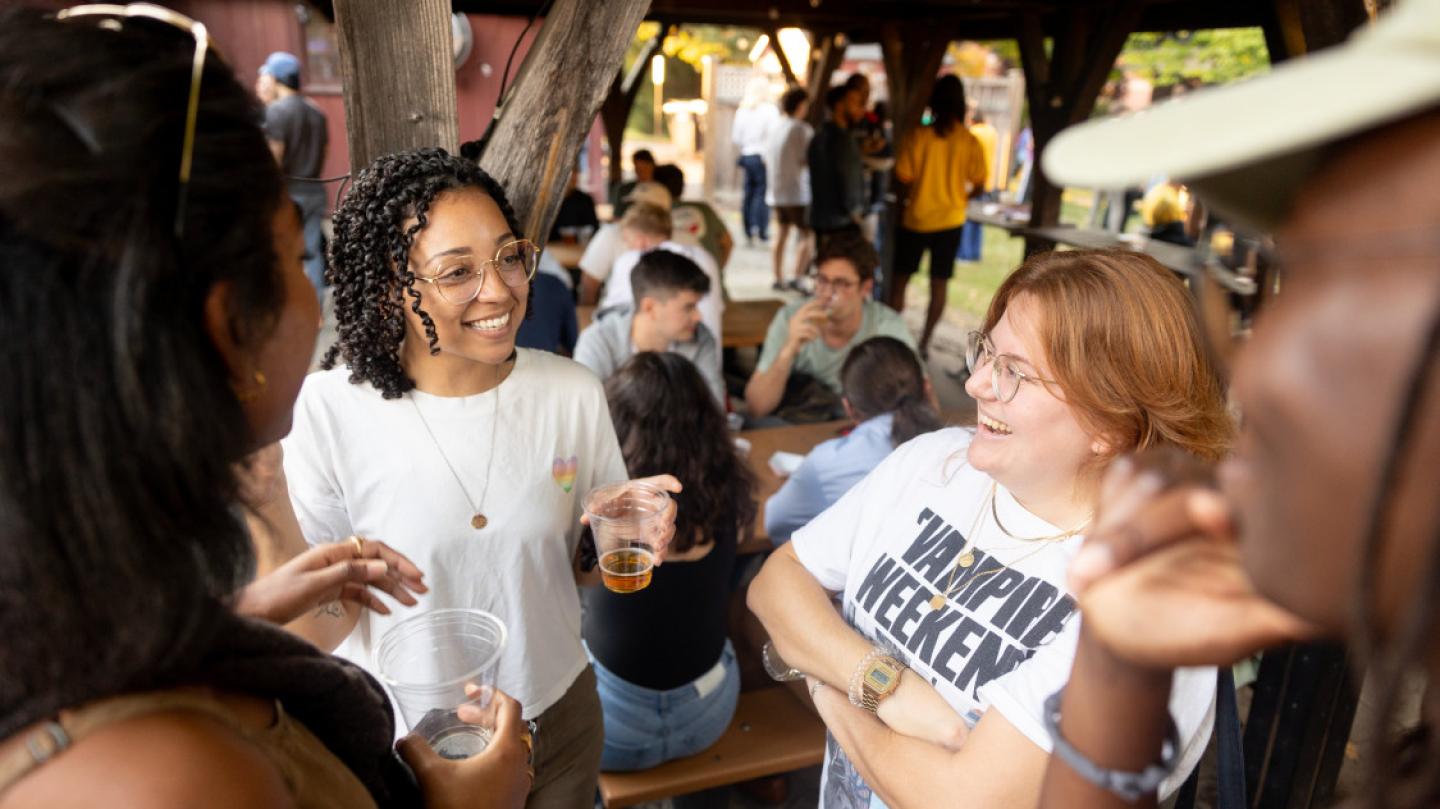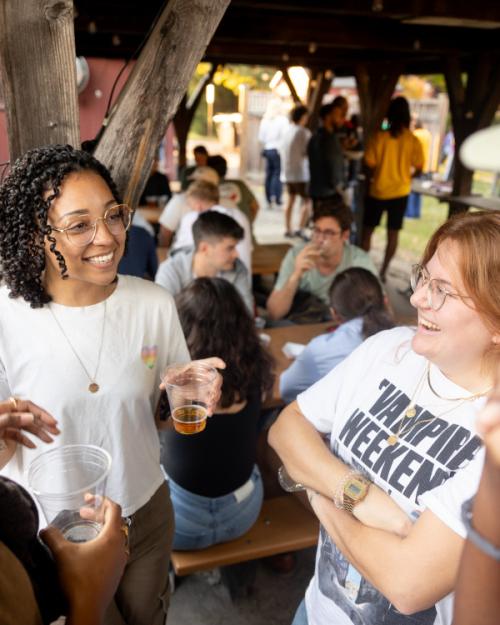The room is crowded and noisy. There are conversations all around, and the residual smell of popcorn and beer hangs in the air. Yet two women meeting for the first time can judge within minutes whether they have potential to be friends – guided as much by smell as any other sense, according to new Cornell psychology research.
“People take a lot in when they’re meeting face to face. But scent, which people are registering at some level, though probably not consciously, forecasts whether you end up liking this person,” said Vivian Zayas ’94, professor of psychology in the College of Arts and Sciences (A&S). “It’s amazing, our attunement to other people, even without being consciously aware of how in tune we are.”
In a study of heterosexual women, Zayas and first author Jessica Gaby, Ph.D. ’17, found that personal, idiosyncratic preferences based on a person’s everyday scent, captured on a T-shirt, predicted how much women liked their interaction partner following four-minute chats across a table in a crowded room. These face-to-face conversations, in turn, influenced how participants later judged the T-shirt scent alone.
The study also found that preferences based on scent – by sniffing a person’s T-shirt – predicted how much participants liked that same person after viewing that person’s portrait for just 100 milliseconds.
“If you think you might be friends with someone you haven’t met based on a tenth-of-a-second exposure to their photograph, you are also more likely to judge them as a potential friend based on the scent of their T-shirt,” Zayas said.
“The Interactive Role of Odor Associations in Friendship Preferences,” published April 2 in Nature Scientific Reports, adds to our understanding of the complex picture of what goes on when meeting someone for the first time – and judging potential for future interactions.
Smell is tightly connected to memory, said Gaby, assistant professor of psychology at Middle Tennessee State University. Emotional memories form in the olfactory system outside conscious awareness.
Social olfactory research often focuses on mate selection, but Gaby wanted to look at platonic interactions. And instead of focusing on individuals’ “natural” odor – isolated from products, pets and other environmental factors – this study leaned into the fact that people tailor their signature scent through many choices they make every day.
“It’s not just perfume,” Gaby said. “It’s your dietary choices. Are you a cat person or dog person? What laundry detergent do you use? All these judgements come together into what we call ‘diplomatic odor.’ You live in this odor space – does it match with the odor spaces of the people you interact with?”
The researchers recruited female subjects who identified as heterosexual for a “speed-friending” event. During an in-person orientation, subjects’ photos were taken. Then, on their own time, they completed an online session making snap judgments of friendship potential based on 0.1-second glimpses of the other participants’ photos.
Also on their own, participants were given T-shirts to wear for about 12 hours, going about their usual activities.
A later in-person event included a rating of the T-shirts that had been worn by those in the session. Participants sniffed shirts, then marked down whether they would like to hang out with that person, become friends with them, or avoid them in the future.
Immediately after, participants went through a live speed-friending session – sitting across a table and chatting for four minutes each with 10 of the other participants/T-shirt contributors, each chat immediately followed by an evaluation of friendship potential.
The speed-friending session was followed by a second sniff evaluation of the T-shirts.
Smell-only evaluations paralleled the in-person evaluations: If a participant judged high friend potential based on the smell of a T-shirt, their evaluation of the same person after a four-minute interaction was the same. Moreover, judgments based on the live interaction predicted changes in a second round of diplomatic odor judgments, suggesting that the quality of the live interaction modified olfactory perception.
Zayas said the consistency of judgments across the three rating opportunities is remarkable.
“Everybody showed they had a consistent signature of what they liked,” she said. “And the consistency was not that in the group one person smelled really bad and one person smelled really good. No, it was idiosyncratic. I might like person A over B over C based on scent, and this pattern predicts who I end up liking in the chat.”
It’s well known that many impressions are based on the way someone looks, Zayas said. But this study has found that a person’s everyday, natural scent is a strong predictor of whether others might want to interact with them.
“It makes sense to me that the way you smell impacts the way I judge you,” Gaby said. “But I was most surprised by the learning, by the shift in the second set of readings – one interaction and you’re like, hmmm, maybe not. One in-person interaction with a person can change the way you perceive their body odor. This is amazing to me.”
Gul Gunaydin, Ph.D. ’13, also contributed to this research, which was supported by the Cornell Center for Social Sciences.





